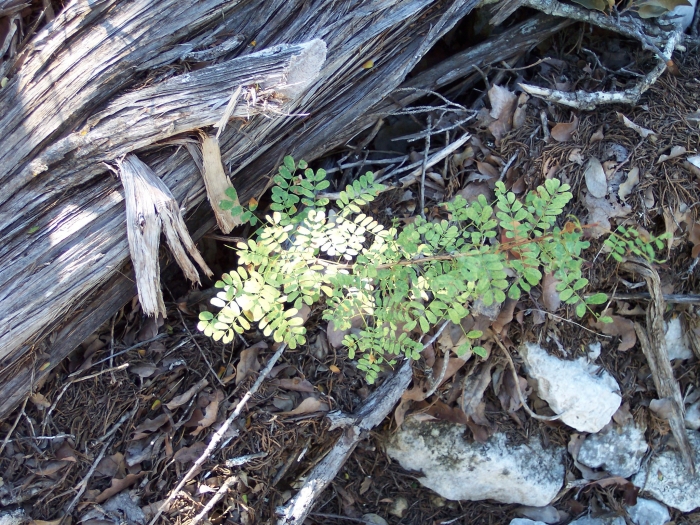Roundflower Catclaw
(Senegalia roemeriana)
Roundflower Catclaw (Senegalia roemeriana)
/
/

Jo Roberts
CC BY 4.0
Image By:
Jo Roberts
Recorded By:
Copyright:
CC BY 4.0
Copyright Notice:
Photo by: Jo Roberts | License Type: CC BY 4.0 | License URL: http://creativecommons.org/licenses/by/4.0/ | Rights Holder: Jo Roberts | Publisher: iNaturalist | Date Created: 2003-01-16T17:29:42-08:00 |



















































Estimated Native Range
Summary
Senegalia roemeriana, commonly known as Roundflower Catclaw, is a thorny shrub or small tree that can be evergreen or semi-deciduous depending on the climate. It is native to the brushlands and arroyos of the South Central United States and Northern Mexico, often found in areas with limestone soils. This plant typically grows to a height of 17-25 feet (5-8 meters) and a width of 8-14 feet (2.4-4.3 meters). It has a spreading habit with a dense canopy of dark green, bipinnate leaves and produces clusters of fragrant, ball-shaped cream and green flowers in the spring and summer, which are followed by flat, elongated seed pods.
Roundflower Catclaw is valued for its drought tolerance and ability to thrive in poor soils, making it suitable for xeriscaping and naturalistic plantings. It is often used for erosion control, as a windbreak, and in wildlife gardens, where its flowers attract pollinators and its seed pods provide food for birds and mammals. In cultivation, it requires full sun, minimal water once established, and well-drained soils. While it is not commonly affected by diseases, its thorns can make it difficult to handle, and it may spread via root suckers if not managed.CC BY-SA 4.0
Roundflower Catclaw is valued for its drought tolerance and ability to thrive in poor soils, making it suitable for xeriscaping and naturalistic plantings. It is often used for erosion control, as a windbreak, and in wildlife gardens, where its flowers attract pollinators and its seed pods provide food for birds and mammals. In cultivation, it requires full sun, minimal water once established, and well-drained soils. While it is not commonly affected by diseases, its thorns can make it difficult to handle, and it may spread via root suckers if not managed.CC BY-SA 4.0
Plant Description
- Plant Type: Shrub, Tree
- Height: 17-25 feet
- Width: 8-14 feet
- Growth Rate: Moderate
- Flower Color: Cream, Green
- Flowering Season: Spring, Summer
- Leaf Retention: Evergreen, Semi-Deciduous
Growth Requirements
- Sun: Full Sun
- Water: Low
- Drainage: Fast, Medium
Common Uses
Bee Garden, Butterfly Garden, Drought Tolerant, Low Maintenance
Natural Habitat
Native to brushlands and arroyos in the South Central United States and Northern Mexico
Other Names
Common Names: Roemer Acacia
Scientific Names: , Senegalia roemeriana, Acacia roemeriana, Acacia malacophylla, Acacia palmeri, Senegalia malacophylla, Senegalia palmeri, Senegalia roemerana,
GBIF Accepted Name: Senegalia roemeriana (Scheele) Britton & Rose